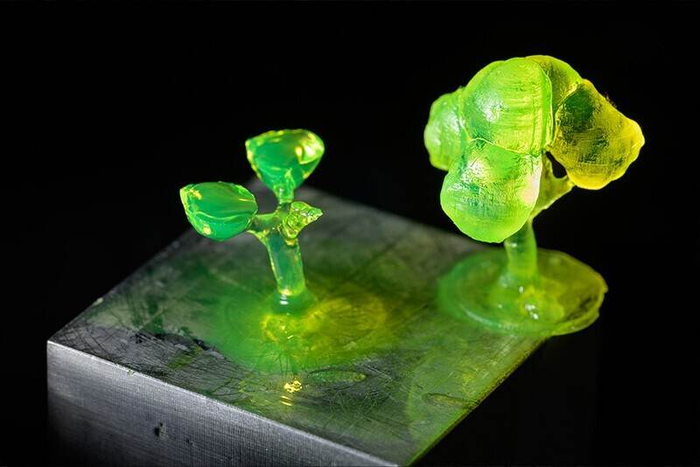
Credit: Pavel Krasnov
A group of scientists from the Siberian Federal University (SFU, Krasnoyarsk, Russia) and the Nikolaev Institute of Inorganic Chemistry (NIIC, Novosibirsk, Russia) combined the useful properties of metal phthalocyanines and palladium membranes in order to create active layers in hydrogen detectors. This operation significantly increases the sensitivity of the sensors. The study is reported in the journals Dyes and Pigments and International Journal of Hydrogen Energy.
High-sensitivity sensors for detecting various gases are very important for the environment, as they allow to make qualitative and quantitative assessment of the content of various gases in the air (for example, hazardous carbon monoxide or ammonia). The data obtained makes helps to combat pollution. On the other hand, there sensors play an important role in medicine. There is a disease called maladsorption: those diagnosed with it exhale more hydrogen. If we make high-sensitivity sensors capable of detecting a small increase in the concentration of hydrogen, this disease can be successfully diagnosed.
The detectors discussed in the paper have a three-layered structure. At the bottom there lies a substrate (which is also a conducting electrode), a film of phthalocyanines (heterocyclic compounds of dark blue color) is applied to it, and finally palladium over this film. It is not easy to produce such a sensor. To do this, it is necessary to obtain a thin film of phthalocyanines, and then deposit a layer of palladium on top. To get this metal, precursors are used (organic compounds that contain palladium atoms). After heating they decompose, organic fragments evaporate, and atoms of metal form a layer with the required structure and thickness.
The sensor works like this: hydrogen easily penetrates palladium and, acting on the surface of the phthalocyanine film, changes its conductivity. "Thin phthalocyanine films are semiconductors themselves. And it is from the change in conductivity that we can judge whether hydrogen is "clinging" or not, and in what concentration it is contained in the air", said Pavel Krasnov, Ph.D. in Physics and Mathematics, senior researcher at the Institute of Nanotechnology, Spectroscopy and Quantum chemistry of SFU.
The authors of these articles for the first time obtained and investigated the crystal structure of thin films of palladium phthalocyanines, as well as the way in which its structure is altered by fluorine atoms (acting as substituents). Phthalocyanine is a flat molecule with hydrogen atoms at its edges. Earlier the authors of the paper have shown that the introduction of fluorine atoms into the phthalocyanine structure increases the sensory response (sensitivity indicator) of these compounds, as they interact with gas molecules. Fluorine is a more electronegative element compared to hydrogen, as a result of which it is able to "pull" more electrons from other atoms of phthalocyanine, including the metal atom located in the center. An increase in the positive charge of a metal atom promotes stronger binding of gas molecules, since such a bond arises predominantly from the donor-acceptor mechanism. A gas molecule is an electron donor (gives electrons), and a metal atom is their acceptor (attaches them).
This hypothesis was confirmed by scientists from SFU with the help of quantum chemical calculations, and their colleagues from NIIC – as a result of the direct carrying out of experimental work that eventually allowed the prototyping of sensors.
Now scientists plan to continue project. They would like to test the possibility of using different substrates — to "plant" phthalocyanines not on electrodes, but on carbon structures — i.e., graphene or carbon nanotubes. Such a replacement will give a stronger response and make the sensor more sensitive to hydrogen. How much sensitivity will grow, only experiments can show. The second promising line of research is to make the palladium layer thinner (also in order to improve the response of the sensor).
###
Media Contact
Yaroslava Zhigalova
[email protected]
7-391-291-2733
@SibFUniversity
http://www.sfu-kras.ru/en
Original Source
http://www.sfu-kras.ru/en/news/19741





